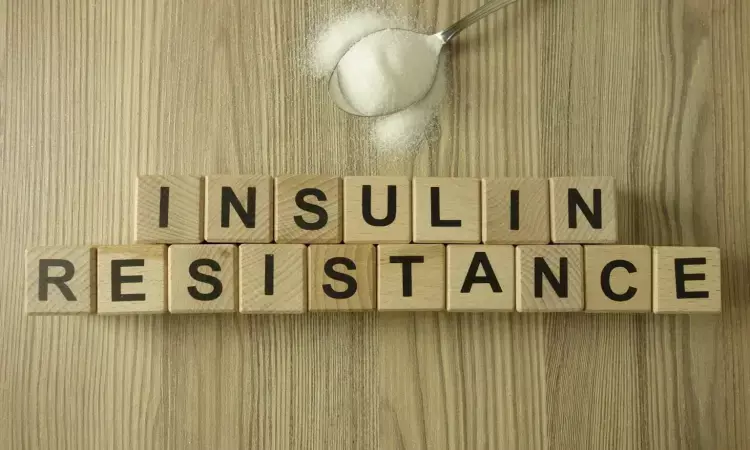- Home
- Medical news & Guidelines
- Anesthesiology
- Cardiology and CTVS
- Critical Care
- Dentistry
- Dermatology
- Diabetes and Endocrinology
- ENT
- Gastroenterology
- Medicine
- Nephrology
- Neurology
- Obstretics-Gynaecology
- Oncology
- Ophthalmology
- Orthopaedics
- Pediatrics-Neonatology
- Psychiatry
- Pulmonology
- Radiology
- Surgery
- Urology
- Laboratory Medicine
- Diet
- Nursing
- Paramedical
- Physiotherapy
- Health news
- Fact Check
- Bone Health Fact Check
- Brain Health Fact Check
- Cancer Related Fact Check
- Child Care Fact Check
- Dental and oral health fact check
- Diabetes and metabolic health fact check
- Diet and Nutrition Fact Check
- Eye and ENT Care Fact Check
- Fitness fact check
- Gut health fact check
- Heart health fact check
- Kidney health fact check
- Medical education fact check
- Men's health fact check
- Respiratory fact check
- Skin and hair care fact check
- Vaccine and Immunization fact check
- Women's health fact check
- AYUSH
- State News
- Andaman and Nicobar Islands
- Andhra Pradesh
- Arunachal Pradesh
- Assam
- Bihar
- Chandigarh
- Chattisgarh
- Dadra and Nagar Haveli
- Daman and Diu
- Delhi
- Goa
- Gujarat
- Haryana
- Himachal Pradesh
- Jammu & Kashmir
- Jharkhand
- Karnataka
- Kerala
- Ladakh
- Lakshadweep
- Madhya Pradesh
- Maharashtra
- Manipur
- Meghalaya
- Mizoram
- Nagaland
- Odisha
- Puducherry
- Punjab
- Rajasthan
- Sikkim
- Tamil Nadu
- Telangana
- Tripura
- Uttar Pradesh
- Uttrakhand
- West Bengal
- Medical Education
- Industry
Insulin resistance associated with cardiovascular pathology that contributes to HF

USA: A recent study published in the Journal of Cardiology has revealed an association of insulin resistance with subclinical myocardial dysfunction and reduced functional capacity in patients with heart failure with preserved ejection fraction (HFpEF).
The findings may inform treatment strategies focused on using tools for estimating insulin resistance and selecting insulin-sensitizing drugs which may improve exercise capacity and cardiac function.
In heart failure with preserved ejection fraction insulin resistance and obesity are prevalent and are associated with adverse cardiovascular (CV) outcomes. Insulin resistance measurement is difficult outside of research settings, and there is no information on its correlation to parameters of myocardial dysfunction and functional status.
To fill this knowledge gap, Allison G. Hays, University School of Medicine, Baltimore, MD, USA, and colleagues aimed to assess the role of estimated glucose disposal rate (eGDR), an easily calculated metric using commonly available clinical variables that reflects insulin resistance, in a well-characterized cohort of HFpEF patients.
They tested the hypothesis that increased insulin resistance (measured by reduced eGDR) is associated with abnormalities in cardiac function and structure in patients with HFpEF.
The study included 92 HFpEF patients with New York Heart Association class II to IV symptoms. The mean age of the participants was 65 years, 64 % were women, and 95 % had hypertension. Mean (SD) BMI was 39 (9.6) kg/m2, glycated haemoglobin 6.7 (1.6) %, and eGDR 3.3 (2.6) mg × kg−1 min−1. They underwent 2D echocardiography, clinical assessment, and a 6-minute walk (6 MW) test. Insulin resistance was defined by the estimated glucose disposal rate. Lower eGDR indicates increased insulin resistance (unfavourable).
Myocardial function and structure were assessed by average E/e’ ratio, left ventricular (LV) mass, left atrial volume, right ventricular systolic pressure, LV longitudinal strain (LVLS), LV ejection fraction, and tricuspid annular plane systolic excursion. Association were evaluated between eGDR and adverse myocardial function in unadjusted and multivariable-adjusted analyses using analysis of variance testing and multivariable linear regression.
The study led to the following findings:
- Increased insulin resistance was associated with worse LVLS in a graded fashion [mean −13.8 %, −14.4 %, −17.5 % for first, second, and third eGDR tertiles, respectively]. This association persisted after multivariable adjustment.
- There was also a significant association between worse insulin resistance and decreased 6 MW distance on univariate analysis, but not on multivariable-adjusted analysis.
"In a well-characterized cohort of HFpEF patients, our findings showed a significant relationship between eGDR and LVLS, suggesting that insulin resistance is associated with CV pathology that contributes to HFpEF pathophysiology, independent of common covariates implicated in HFpEF," the researchers wrote.
Reference:
Gudenkauf, B., Shaya, G., Mukherjee, M., Michos, E. D., Madrazo, J., Mathews, L., Shah, S. J., Sharma, K., & Hays, A. G. (2024). Insulin resistance is associated with subclinical myocardial dysfunction and reduced functional capacity in heart failure with preserved ejection fraction. Journal of Cardiology, 83(2), 100-104. https://doi.org/10.1016/j.jjcc.2023.06.008
Dr Kamal Kant Kohli-MBBS, DTCD- a chest specialist with more than 30 years of practice and a flair for writing clinical articles, Dr Kamal Kant Kohli joined Medical Dialogues as a Chief Editor of Medical News. Besides writing articles, as an editor, he proofreads and verifies all the medical content published on Medical Dialogues including those coming from journals, studies,medical conferences,guidelines etc. Email: drkohli@medicaldialogues.in. Contact no. 011-43720751


